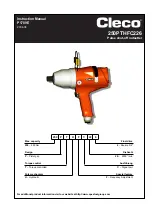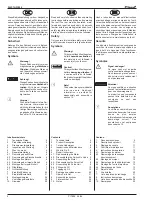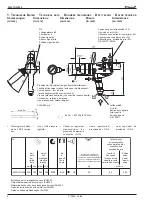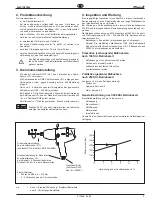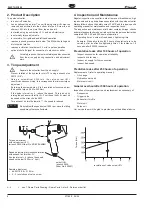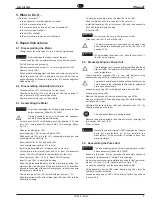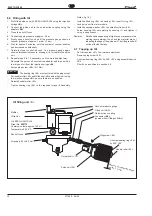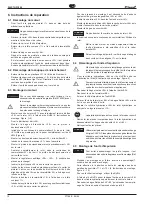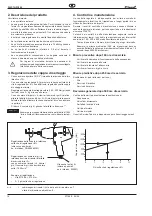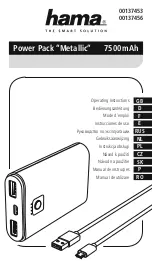
8
P1789E 06/04
250PTHFC226
revolutions of valve screw <81>
Torque (Nm)
2. Product Description
The pulse nutsetter
•
is a shut-off nutsetter
•
has an optional top air inlet. To use it the plug screw <9> must be
removed and screwed into the bottom inlet port. Screw the air
strainer <52> into the air inlet from top and seal it.
•
is started using a push-button <21> and a soft-start valve.
•
is externally torque adjustable
•
is reversible, for righthand and lefthand operation
•
reaches a sound pressure level below 76 dB(A) when idling and
at clockwise rotation
•
reaches a vibration level below 2.5 m/s² in pulse operation
•
optional shut-off signal for connection to electronic verifier
For safety reasons, the tool must always be disconnected
from the air supply during connection and adjustment
work
3. Torque Adjustment
Separate the nutsetter from the air supply!
-
Prevent rotation of the hydraulic rotor <73> using a wrench size
SW19 (3/4").
-
Using a screwdriver SW4 turn the valve screw <81>
counterclockwise until stop; this corresponds to minimum torque
adjustment.
-
By turning the screw approx. 0 to 4 revolutions clockwise, adjust
the desired torque (160 to 250 Nm).
-
If the pulse interval is < 4, reduce the speed. This is done by
turning the exhaust air throttle <3>. First the set bolt <8> must be
loosened with a wrench size SW2.
-
Turn exhaust air throttle toward "-", the speed is reduced.
Caution!
Caution!
Do not adjust the speed below 1800 rpm, since the idling
speed may otherwise fluctuate.
4. Inspection and Maintenance
Regular inspection is essential in order to prevent breakdowns, high
repair costs and long downtimes associated with the pulse nutsetter
Always follow and use the safety notes P1687S and this type-specific
operating manual for maintenance and inspection tasks
The inspection and maintenance list below contains timings, checks
and maintenance tasks to be carried out when the pulse nutsetter has
completed 100, 250 and 500 hours of operation
Operating time = number of rundowns x tightening time
Example: Predicative tasks (250 hours of operation) are to be
carried out at an effective tightening time of, for instance, 1.8
seconds after 500000 rundowns
Preventative tasks after 100 hours of operation
-
Inspect suspension for operational reliability
-
Inspect drive for wear
-
Inspect air supply for firm connection
-
Inspect free speed
Predictive tasks after 250 hours of operation
Replacement of (refer to operating manual)
-
Oil change
-
Hydraulic service kit
-
Motor service kit
General overhaul after 500 hours of operation
Inspection of component parts and replacement as necessary of
-
Suspension
-
Trigger valve
-
Exhaust air throttle
-
Motor unit
-
Pulse unit
Our service team will be glad to provide you with additional advice
<..>
=
see 7. Spare Parts Drawing / Spare Parts List or 9. Fixtures order list
Sample adjustment
•
bolt M16 8.8 = 210 Nm
•
2 - 3 revolutions of valve screw
set bolt <8>
(wrench SW2;
Order No. 920001)
Torque adjustment
with valve screw <81>
(wrench SW4; Order No. SD-5004-4MM)
Speed adjustment at clockwise rotation
with exhaust air throttle <3>:
if pulse interval < 4, reduce the speed,
speed not below 1800 min
-
¹ (rpm)

